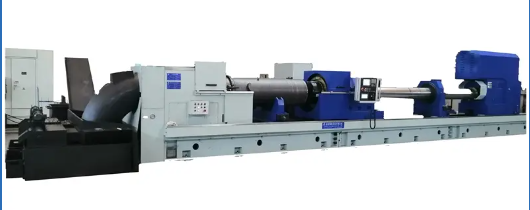Deep hole machining is a specialized process that involves cutting or boring holes with a high aspect ratio. It is an important technology in various industries including aerospace, automotive, oil and gas, and medical device manufacturing. In order to achieve accurate and efficient deep hole machining, a combination of skiving and rolling methods is usually used.
skiving and rolling is a hybrid machining technology that combines cutting and surface finishing processes. This method is particularly suitable for producing high-quality, smooth and durable holes with tight tolerances. Due to its many advantages, it is becoming increasingly popular in deep hole machining applications.
So, what exactly are skiving and tumbling machines? Let’s take a closer look at this innovative technology.
skiving is the primary process for material removal during deep hole machining. It involves using specialized cutting tools with multiple blades, called cutters, to remove material in a spiral motion. This process creates high-quality holes with excellent surface finish and precision. Cutting geometry, including the number and angle of inserts, can be customized to specific machining requirements.
Once the material is turned, it is tumble polished to achieve the desired surface finish and enhance the mechanical properties of the hole. Roller polishing involves applying pressure to the machined hole using a set of hardened and highly polished rollers. These rollers exert a controlled force on the surface of the hole, causing plastic deformation and achieving a mirror-like finish.
The combination of skiving and roller burnishing offers several advantages over traditional deep hole machining processes. First, it significantly reduces overall processing time. Skiving and tumbling can accomplish material removal and finishing in one operation, rather than using different tools to perform multiple passes. This not only saves time but also reduces the chance of errors during tool changes.
In addition, skiving and rolling can achieve excellent dimensional accuracy and surface quality. The cutting action of skiving produces high-precision and consistent hole geometries, while the tumbling polishing process ensures a superior mirror-like surface. The resulting hole has excellent roundness, straightness and cylindricity, meeting the stringent requirements of critical applications.
In addition, scraping and rolling can enhance the mechanical properties of machined holes. Plastic deformation caused by rolling increases hardness, fatigue resistance and surface compressive strength. This in turn increases the service life and performance of components manufactured through deep hole machining, especially in applications involving high-pressure environments or cyclic loads.
Skiving and rolling are key components of the deep hole machining process. This hybrid technology combines precision cutting with surface finishing to produce high-quality holes with tight tolerances. With the advantages of reduced machining time, excellent dimensional accuracy, surface quality and improved mechanical properties, skiving and rolling are becoming increasingly popular in industries that require deep hole machining.
Post time: Nov-09-2023

